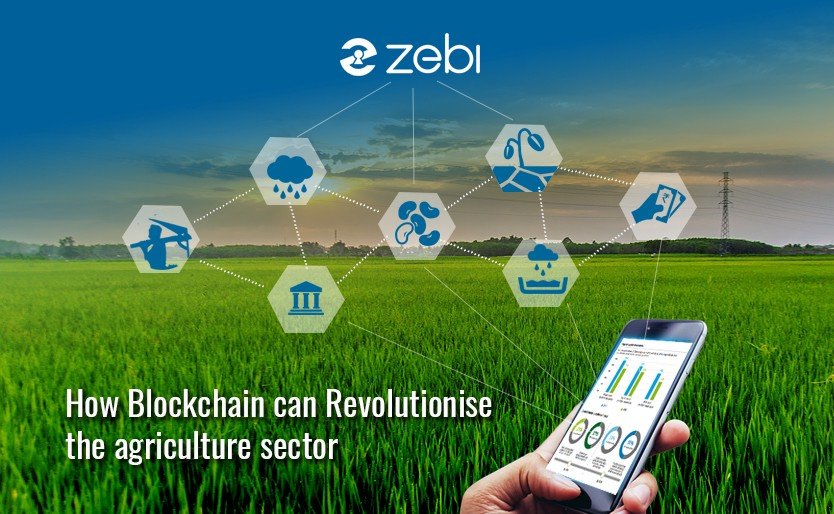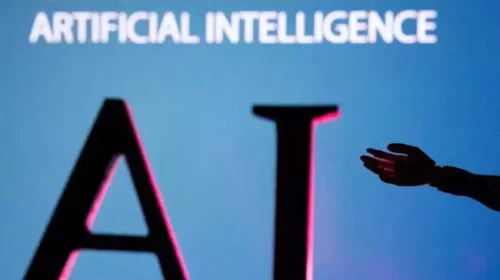Blockchain has been the buzzword for quite some time now. The aura surrounding the ‘bitcoins,’ gave its underlying technology ‘blockchain’ an unprecedented limelight. While bitcoins legality and future in India is still in doldrums, blockchain has the capacity to disrupt the ever stressed agrarian sector.
What is Blockchain?
In technical terms, blockchain is defined as a distributed and decentralized ledger. Unlike traditional systems, where transactions are stored in physical ledger or in a single database; blockchain felicitates every member to store transaction in a decentralized data log maintained on the network. Transactions are approved in the decentralized data log through consensus and are secured by cryptographic algorithm. Once the transactions are recorded by consensus; it is done permanently and cannot be edited/tampered by any member. Blockchain’s feature of keep the data incorruptible and public to all; makes it the headshot technology to go with.
From disbursing fertilizers to improving the supply chain; blockchain finds innumerable use-cases in the agriculture sector. Following are the specific examples of blockchain that can significantly revolutionize agricultural value chain:-
- Giving the Right Price to Farmers
Giving the right price to the farmers has always been a challenging task in India. Farmers sadly share the minimum profit in the entire supply chain. With blockchain, controlling every transaction of the agricultural supply chain (that includes farmers, brokers, distributors, processors, retailers and consumers), the farmer would have accurate information and resultant confidence to demand the right price for its produce.
It would also help farmers to analyze emerging consumption patterns and see the upcoming demands and plan his sowing accordingly.
- Efficient And Time Bound Subsidy Rollout
The agricultural sector is the major beneficiary of the subsidy offered by the government. The farmers uses these subsidies to purchase agricultural inputs but very often there’s a lot of corruption involved in the process and the subsidies are either misused or don’t reach the farmers at all. With blockchain, subsidy transfer can be made real time, automated and efficient. It would also cut down the turnaround time in subsidy distribution as blockchain would digitalize the process of multiple authorizations and approvals.
- Easing Farm Mechanizing
Tractor and farm equipment sharing, through an Uber-like model, can be powered by blockchain. This would drastically save the farmers from the burden of buying and maintaining agri machines every season. Fractional ownership of tractors, with multiple-party financing, can solve the mechanization problem with much ease.
- Commodity Trading
Agricultural commodity trading rules involves heavy documentation. Processes are complex, with rules on when and how to hand over ownership of the cargo and when and how to pay. Often, transactions are conducted literally on paper, with contracts faxed back and forth to the counter-parties and auditors to make sure everything is legitimate and authentic. Something as simple as a typing error sets back the whole process. The Blockchain will significantly clean things up: human typos and errors will be caught instantly; the system will make sure that everyone has the exact same set of paperwork, and so on.
Recently, the first agricultural commodity trade using Blockchain technology was concluded wherein 60,000 tons of American soybeans were sold to the Chinese government. The shipment from America to China involved five different parties: Louis Dreyfus Co (LD), Shandong Bohi Industry Co, ING, Societe Generale and ABN Amro. A Blockchain platform Easy Trading Connect (ETC) incorporated a number of contracts and certificates needed for the trade. Using the ETC platform, Bohi bought the soybeans from LD – while various banks provided the credit certificates needed for the sale. The shipping companies took care of the paperwork needed for the shipment and the USDA was involved in providing certificates for the sanitation requirements. The parties reported that they managed to cut the total time for all these logistics by 80 percent.
There are many ways the Blockchain can help in commodity trading. Shipments can be tracked the entire way, ensuring that, (say); temperature remains constant, with both the seller and the buyer being informed instantly and simultaneously of any issue.
- Digitalizing Land Records
Land registry for sale and purchase is a highly labor intensive and cumbersome process. The entire process is susceptible to innumerable frauds and land dispute litigation contributes a major chunk of the pending cases in the court. Blockchain can make all kinds of land recording more efficient and accessible as the data recorded is publically available. It will also bring down the government expenditure as the entire process is too labor intensive.
Blockchain is a new technology with the power to disrupt and dismantle existing system. Since the technology is still in its nascent stage; quality and utility of the information depends upon on the extraneous input for example: how accurately a soil sensor measures moisture, or how honestly does a broker records the sale price. Various stakeholders are employing pilot project and proof of concept application. The real essence of blockchain is in its power to democratize and digitalize the existing processes. Undoubtedly, blockchain promises a great future ahead.
– Mr. Venkatesh Gupta





